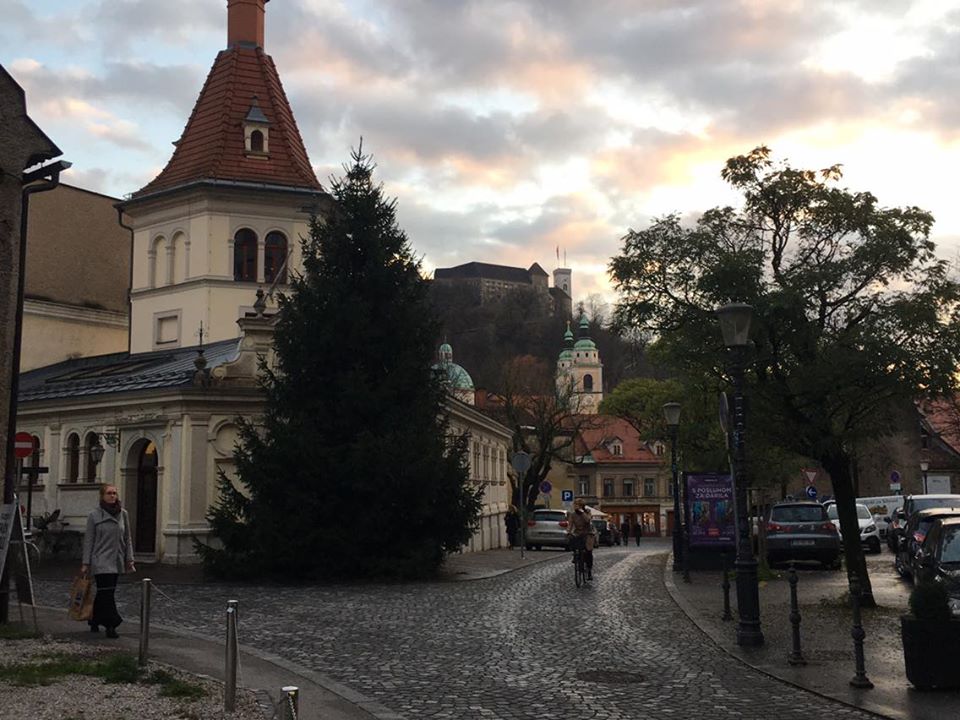
Last time, past and present in Ljubljana.
We arrived in Ljubljana at 3:00 p.m., walked to the Hotel Park from the train station, and took some time to get situated. It was a ten-minute stroll to the center of gravity in the city, the main square of the old town by the cathedral and river, at the foot of the hill where the castle lies. We got there just before dusk.








Dinner was at Druga Violina.
Druga violina specialises in good locally grown produce, a simple short menu of Slovene classics and a top location in the city’s old town, but there’s a twist in the tale with the ‘other violin’ (as the English translation of the name goes). It’s actually a project for people with disabilities, who produce much of the food on a farmland near Ljubljana and also work as waiting staff in the restaurant itself.
The food was excellent, and we highly recommend this establishment, both for the quality of the meal and its special mission.
There was a local coldcut and salami board, unfiltered and regular Union lager, schnitzel for Diana and my Štruklji, which are rolled dumplings. They can have savory or sweet fillings; mine was a main course of mushroom with gravy. Another time we sampled Štruklji filled with apples — like your Slovenian grandma used to make.


On Wednesday morning we visited the market for breakfast and coffee, then went to the funicular for a ride up to Ljubljana Castle. I hadn’t been to a castle of any sort in a good while, and this experience was memorable. Following are a mix of both our photos.












The lowdown, courtesy of Wikipedia:
Ljubljana Castle (Slovene: Ljubljanski grad, German: Laibacher Schloss) is a castle complex standing on Castle Hill above downtown Ljubljana, the capital of Slovenia. It is a key landmark of the town. Originally a medieval fortress, it was probably constructed in the 11th century and rebuilt in the 12th century. It acquired its present outline with an almost complete overhaul in the 15th century, whereas the majority of the buildings date to the 16th and 17th centuries. Initially a defense structure and since the first half of the 14th century the seat of the lords of Carniola, it was since the early 19th century used for various other purposes and today is used as a major cultural venue.
After a light lunch, it was off to the National Museum of Contemporary History and nearby Union brewery.











